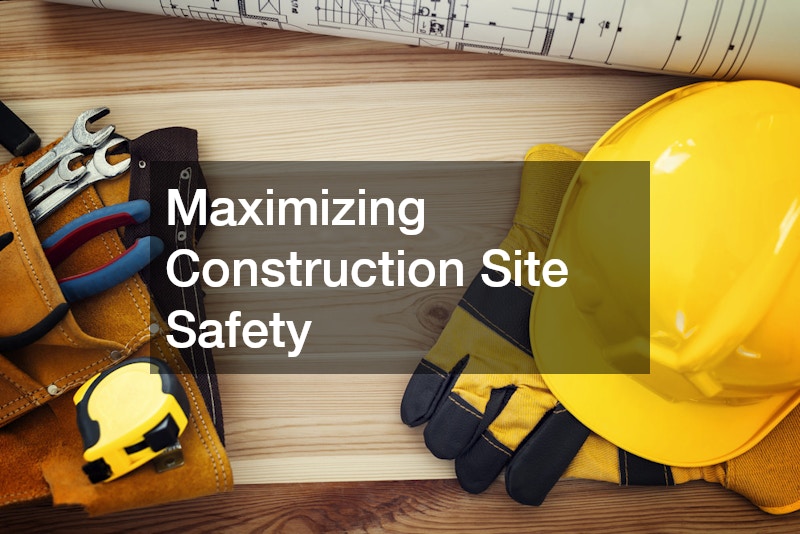

Updated 9/19/24
Safety should always be a top priority on any construction site. Proper planning and disposal of construction debris can mitigate some injury risks. Construction debris can pose a great risk of injury to workers and others who encounter the work site. Proper disposal of building rubble and debris is a must to ensure everyone’s safety.
There are simple solutions for managing construction debris. Firms that specialize in construction debris hauling can be very helpful on the job site. Most companies find it difficult to spare their labor to handle debris properly. A professional firm that can easily dispose of construction debris safely and efficiently can be an asset to any project manager.
These firms manage tasks like concrete hauling to safely clear the site of debris. They can also manage commercial dumpster services for on-site collection. Having the right tools and equipment on the job site to manage debris can be a positive game changer.
When you combine the right support, equipment and proper training for managing debris you can greatly increase safety on the site. Keeping the job site well organized and free of debris ensures that workers can move around the site safely.
A building can be susceptible to all kinds of hazards or damage over time, such as frayed wires setting carpets on fire or water damage causing a ceiling to collapse, or fire escapes rusting out and breaking during use. However, even a building under construction can present hazards to the workers present, and this may include physical injuries such as falls or getting hit by falling objects, or other hazards such as materials catching on fire, leaking water breaking down walls, inhaling fumes and dust, and more. Construction site protection is vital to keeping the people on a work site clear of these hazards, and construction site protection can manifest in many simple and practical ways.
The Reality of Injury
The bad news is that hazards will always exist at construction sites, or in a complete building where remodeling or other work is taking place. Of all occupation-associated illness in the U.S., lung disease is the most common, and that can often happen at the work site. Dust, plaster particles, fumes from equipment or chemicals, and more can all present themselves to workers and cause harm. In fact, respirable, crystalline silica particles are just 1/100th the size of sand grains, and they can get into the air during drilling, cutting, sawing, crushing and more where stones and other materials are used. In fact, some 2.3 million people are exposed to silica at the workplace in the United States. And out of all construction workers, 51.8%, just over half, were diagnosed with moderate pulmonary restriction, and 4.7% of those cases were classified as obstructive. What, then, can be done to keep the workplace safe?
Construction site protection begins with knowing what materials and tools are being used, and where and when. For example, according to Travelers, fire hazards can be surprisingly common. Welding or metal cutting jobs often put out sparks, as can blow torches, and improperly using these items can set nearby wood or canvas on fire, or even spark combustion in nearby electrical or gas-powered construction equipment. For a similar reason, smoking cigarettes or cigars is often forbidden at the construction site, and signs to this effect may be put in place to shore up construction site protection. Or, a designated smoking area may be set up. And where sparks and flames are used, temporary floor covering can be put in place. Floor surface protection can be made of fire-resistant materials that don’t allow sparks or open flames to set the material on fire, and can prevent the sparks from moving to other, flammable, objects.
Similar floor protection may be used for construction site protection where chemicals and liquids are involved. Paint and paint thinner, caulk, spray foam, powerful glues, and more may drip onto the building’s floor, and if the floor is already complete, this mess can undo some of the work that has already been done for that floor, or at least necessitate a clean-up job. And if an entire can or bucket of such materials is knocked over or spilled, floor coverings are especially important. Similarly, the walls and other surfaces could use such covers when liquids are in use; temporary surface protection can keep paint, caulk, and powerful glues from sticking to surfaces where they do not belong. Such materials may ruin whatever they touch, and fixing or replacing the afflicted material can be expensive and slow down a project. Floor protection for painting can keep ahead of any paint spills or drips as the work is carried out.
Finally, where silica and other fine particles or fumes are concerned, gas masks, whether just over the mouth or over the entire face, can be worn to ensure maximum construction site protection for workers. Such fumes cannot enter the lungs if a mask is in place, assuming the filters are working well. For stronger fumes, a full head mask or even an entire suit may be needed to shield not just the lungs, but also the skin and eyes from particles or fumes. If many particle are being kicked up and settle onto the floor, then floor protection paper may be warranted.




